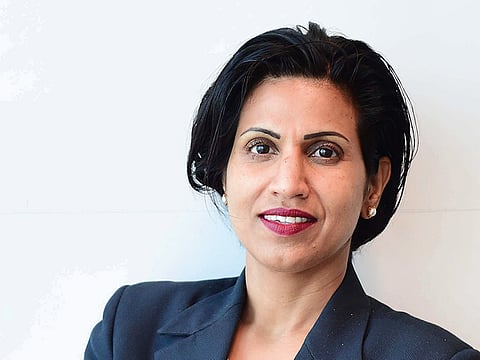Gulf bonds issuance pipeline slows, but investors seek more
Emirates NBD expects $65b of GCC bonds issues this year

Dubai: After record dollar bond issuances in the Gulf in the first half of the year, the pipeline has come to grinding halt as domestic bonds surge, and budgets deficits reduces. As a result, the second half dollar issuances may tumble by 50 per cent compared to the first half, according to Emirates NBD.
Anita Yadav, Head of Fixed Income Research, Senior Director — Wholesale Banking, expects the total dollar issuances in 2017 to be at $65 billion (Dh234 billion), that would mean she expects $22 billion in the second half, compared to $43 billion in the first half. The GCC issued dollar bonds worth more than $70 billion last year.
“GCC sovereigns are keen to develop the domestic bond markets to reduce companies’ near-complete dependence on bank loans particularly now that governments may not be in a position to fund any cash strapped Government related enterprises (GRE) or large corporate.,” Yadav told Gulf News.
“Consequently, issuance in local currency markets has more than doubled this year, somewhat reducing the need to rely on external funding via dollar bonds,” she added.
The slowdown in growth is resulting in reduced capital expenditure.
Emirates NBD forecasts an average real GDP growth for the GCC to be at 1.1 per cent which is less than half of 2.3 per cent achieved last year as Opec members implement oil production cuts.
“Though we expect GDP growth to pick up next year, it may not translate into any immediate capital expenditure funding need by the corporates,” she said.
Receding expectations of a rate hike has also the urge to front load borrowing needs.
Most of the issuances seen in second quarter came in from the expectations of a 3-4 rate hikes in the year, but on paper the US Federal Reserve delivered only one rate hike.
“Rising geopolitical risks, mixed US economic data and changes in US Federal Reserve Board members have reduced the rate hike expectations to only one more hike between now and end of 2018. In fact wavering inflation data is gradually draining confidence out of the belief to raise rates at all. In such environment, no one appears to be in a hurry to face the market volatility,” Yadav said.
More appetite
But investors in quest of yields has more appetite for dollar bonds in the GCC.
“The demand for dollar bonds remains high in the region, driven by relatively still low interest rates, the hunt for higher yields and demand for duration by the insurance or pension companies. Improving liquidity in the banking sector also supported bid tone,” Yadav said.
This has resulted in GCC bonds deliver strong performance with year to date returns of 5.5 per cent.
“This rally is further being lifted by the recent change in the US rate hike expectations driven by increasing geopolitical tensions. However despite good demand and solid performance of existing bonds, new issue supply has been negligible in the recent months,” Yadav said.
Sign up for the Daily Briefing
Get the latest news and updates straight to your inbox



